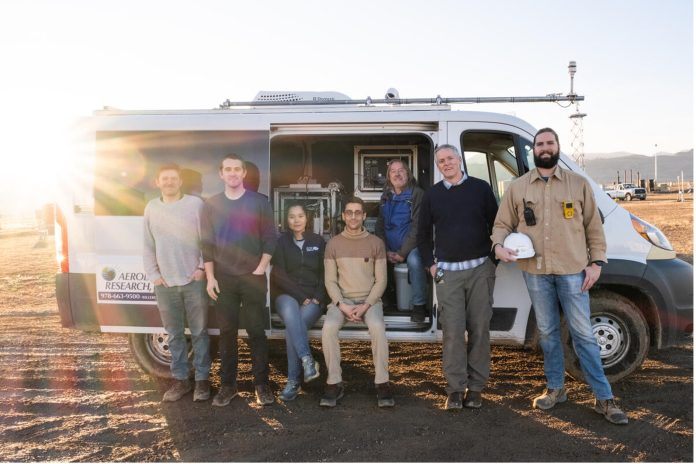
All eyes are on hydrogen for its potential as a clean energy source, especially in hard-to-decarbonise sectors like steel and cement production and long-haul transportation, where green electricity can’t currently do the job by itself.
But before anyone crowns hydrogen a golden climate solution, we need to know how much hydrogen escapes into the atmosphere along its value chain, from production to distribution to storage and end use.
That’s because hydrogen is a tiny, leak-prone molecule that triggers powerful warming effects, a problem that most people thinking about hydrogen have overlooked.
And the technology that can help us quantify hydrogen emissions is just now being developed and demonstrated. Aerodyne Research Inc. in collaboration with Environmental Defense Fund (EDF) is unveiling a new instrument that for the first time allows for the quantification of hydrogen emissions across the value chain.
To quantify emissions, we need new tools
Hydrogen can be produced and used cleanly. But hydrogen itself is an indirect greenhouse gas, which means its emissions can increase the concentrations of other greenhouse gases in the atmosphere.
Though short-lived, the climate impact of hydrogen emissions is potent. Pound for pound, its warming potential is about 40 times greater than carbon dioxide in the first 20 years after its release.
A growing body of research by EDF and others has shown that high leakage rates can severely undermine hydrogen’s climate benefits, particularly in the near term, and that identifying, quantifying and minimising emissions will be critical components of successful hydrogen deployment as a decarbonisation strategy.
Historically, detecting hydrogen leaks has focused on larger releases that pose safety risks (large leaks can explode).
Smaller leaks — the kind that can significantly contribute to undermining hydrogen’s climate benefit when aggregated across the value chain — have been effectively impossible to quantify, because there isn’t a technology that can accurately measure hydrogen at the low concentrations required to quantify emissions from a facility.
As a result, we have very little data on hydrogen emissions from real-world infrastructure. Peer-reviewed studies over the last 20 years suggest radically different potential emission rates from 0.3% to 20% for varying components of the value chain, largely based on theories or extrapolations based on natural gas leak rates.
The bottom line is simple: to effectively understand the potential impact of hydrogen deployment on the climate, we need accurate hydrogen emissions data, and that requires much more sensitive and responsive analytical instruments.
Spotting ‘climate-relevant’ hydrogen leaks
With funding from the U.S. Department of Energy, Aerodyne Research developed a prototype hydrogen analyser that achieved great precision with high measurement frequency, detecting hydrogen with 10 parts per billion sensitivity within seconds.
Safety-focused sensors that look for larger leaks detect concentrations in parts per million every few seconds in the best of cases, not sufficient to characterise most emissions.
This winter, researchers from EDF and Cornell University joined Aerodyne Research to field test the prototype instrument outdoors in a series of controlled-release experiments at Colorado State University. The analyser successfully detected parts-per-billion-level increases in hydrogen concentration in the air caused by staged leaks.
To cut through the science-speak: The testing showed that we can, in fact, quantify small hydrogen emissions that matter for the climate using this new analyser. Our next step is to take the analyser out to existing hydrogen facilities like fertiliser plants, hydrogen fuelling stations and other industrial sites to measure their emissions.
We need more data, and fast
The scientific consensus around hydrogen’s impact on the climate is emerging quickly. But there is still much more to learn about the scale of hydrogen emissions, and the clock is ticking.
Already, half a trillion dollars is earmarked for hydrogen projects around the world, and more will surely follow. Before the hydrogen wave overtakes us, we must be confident this once-in-a-lifetime energy investment will deliver significant climate benefits.
New innovations like Aerodyne’s instrument are critical.
But so, too, will be industry leaders who step up to help quantify emission rates and determine what is causing hydrogen to escape into the atmosphere when it is detected. They must be part of this important and historic research.
Note: Tianyi Sun is a Climate Scientist at Environmental Defense Fund (EDF).
This article is republished from: https://www.edf.org/blog/2023/03/04/we-need-new-tech-understand-hydrogens-climate-impact
This article is republished in: https://thepetridish.my/2023/06/12/we-need-new-tech-to-understand-hydrogens-climate-impact/